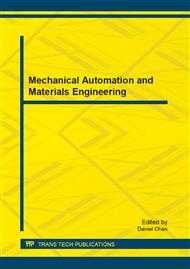[1]
Nielsen, J., Mack, R.L. (1994). Usability Inspection Methods. New York:Wiley.
Google Scholar
[2]
N. M. Shryane, S. J. Westerman, C. M. Crawshaw,G. R. J. Hockey & J. Sauer (1998). Task analysis for the investigation of human error in safety critical software design: a convergent methods approach. Ergonomics, 41(11), 1719-1736.
DOI: 10.1080/001401398186153
Google Scholar
[3]
Hidekazu Yoshikawa, Wei Wu (1999). An experimental study on estimating human error probability (HEP) parameters for PSA/HRA by using human model simulation, Ergonomics, 42(11), 1588-1595.
DOI: 10.1080/001401399184910
Google Scholar
[4]
Krokos KJ, Baker DP (2007). Preface to the special section on classifying and understanding human error. Human factors, 49(2):175-176.
DOI: 10.1518/001872007x312414
Google Scholar
[5]
Maxion RA, Reeder RW (2005). Improving user-interface dependability through mitigation of human error. International Journal of human-computer studies, 63(1-2): 25-50.
DOI: 10.1016/j.ijhcs.2005.04.009
Google Scholar
[6]
Sun Zhiqiang, Shi Xiujian (2008). A framework for classifying human errors based on cognitive model. Journal of national university of defense technology, 30(1): 73-77, 93. (in Chinese).
Google Scholar
[7]
Norman, D. A (1981). Categorisation of action slips. Psychology Review, 88: 1-15.
Google Scholar
[8]
Reason J (1990). Human Error. New York: Cambridge University Press.
Google Scholar
[9]
Reason, J (2000). Human error: Models and management. British Medical Journal, 320, 768-770.
Google Scholar
[10]
Li Leshan (2004). Human computer interface design. Beijing:Science Press. (in Chinese).
Google Scholar
[11]
Wu Xiaoli (2013). A survey of user error method from cognitive aspect. Chinese Journal of Ergonomics, 19(2). (in Chinese).
Google Scholar
[12]
Hao Fang (2006). Uninhibited processing mechanism of prioritizing selection in preview search. Beijing:Institute of Psychology, Chinese Academy of Sciences.
Google Scholar
[13]
Han Shihui (2000). The global precedence in visual information processing. Journal of Chinese Psychology, 32(3): 337-347. (in Chinese).
Google Scholar
[14]
Petty, R.E., Desteno, D. &Rueher, D. D (2001). The Role of Affect in Attitude Change. In Forgas J.P., Handbook of Affect and social Cognition. Mahwah, NJ: Lawrence Erlbaurn . 212-229.
Google Scholar
[15]
Neisser U (1976 ). Cognition and reality: principles and implications of cognitive psychology. W.H. Freeman.
Google Scholar
[16]
Lavie, N., Hirst, A., de Fockert, J., Viding, E (2004). Load theory of selective attention and cognitive control. Journal of Experimental Psychology: General, 133: 339-354.
DOI: 10.1037/0096-3445.133.3.339
Google Scholar
[17]
Lavie, N (2005). Distracted and confused? Selective attention under load. Trends in Cognitive Sciences, 9: 75-82.
DOI: 10.1016/j.tics.2004.12.004
Google Scholar
[18]
Desimone R, Duncan J (1995). Neural mechanisms of selective visual attention. Annual Review of Neuroscience, 18: 193-222.
DOI: 10.1146/annurev.ne.18.030195.001205
Google Scholar
[19]
Bjorklund D F (2003). Children's thinking. 4th ed. Belmont: Wadsworth/Thomson learning, 119~140, 142~145, 162~163, 343~344.
Google Scholar
[20]
Shao Zhifang (2006). Cognitive Psychology. Shanghai: Shanghai Foreign Language Education Press. (in Chinese).
Google Scholar
[21]
Robert L. Solso, Otto H. Maclin, M. Kimberly Maclin (2008). Cognitive Psychology. Beijing: China Machine Press.
Google Scholar


